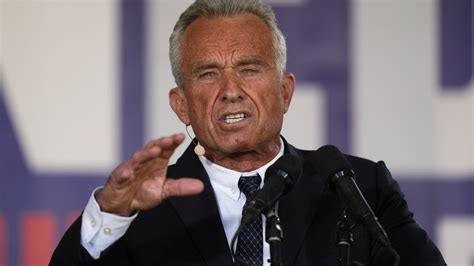Federal Layoffs The Latest Tracking the Cuts Targeting Federal Agencies Veterans Affairs Turmoil Who Is in DOGE? Advertisement SKIP ADVERTISEMENT You have a preview view of this article while we are checking your access. When we have confirmed access, the full article content will load.
—
Secretary’s Cost-Cutting Measures
A few days ago, Health Secretary Robert F. Kennedy Jr. ignited a storm with his proposal to slash thousands of jobs within his department. This move came on the heels of an earlier initiative that saw approximately 10,000 positions eliminated through retirements and buyouts during the initial phases of the Trump administration.
Kennedy took to various media platforms to justify his decision, branding the Department of Health and Human Services as “the biggest agency in government,” boasting a colossal $1.9 trillion budget — double the size of even the Pentagon itself.
In one candid interview with NewsNation, he questioned the efficacy of pouring copious amounts of money into an agency that seemed to yield minimal improvements in American healthcare outcomes: “with all the money that was being thrown at it, with all the personnel that were being brought in.”
—
The Fiscal Reality
Contrary to popular belief, experts reveal that a mere fraction—less than 1%—of H.H.S.’s monumental $1.8 trillion budget is channeled towards staff expenses within federal health agencies such as FDA, CDC, NIH, among others.
The lion’s share of these funds finds its way into Medicare for individuals aged 65 and above and Medicaid for low-income segments. These crucial allocations ultimately trickle down to sustain hospitals, clinics, nursing homes, dialysis centers pharmaceutical firms medical equipment manufacturers, as well as Medicare Advantage private insurance schemes.
—
Expert analysts delve deeper into this intricate financial labyrinth by highlighting how essential services like providing care for seniors under Medicare or supporting vulnerable populations through Medicaid necessitate substantial financial commitments—illustrating why personnel expenditure represents only a minuscule portion when gauged against these colossal outlays.
—
In parsing through Kennedy’s rationale for trimming workforce numbers within H.H.S., some may argue that focusing solely on headcount reductions might oversimplify addressing broader fiscal challenges plaguing federal health spending dynamics—a sentiment echoed by several budget specialists who stress delving beyond surface-level cost-cutting measures towards fostering more nuanced solutions finely attuned to tackling underlying systemic issues head-on.









Leave feedback about this